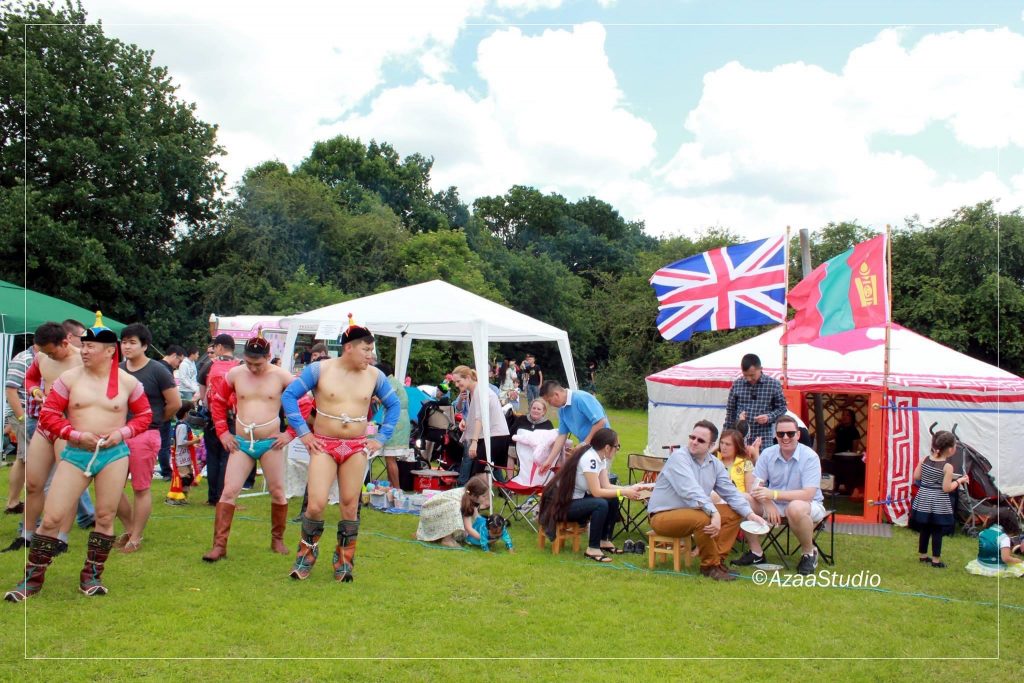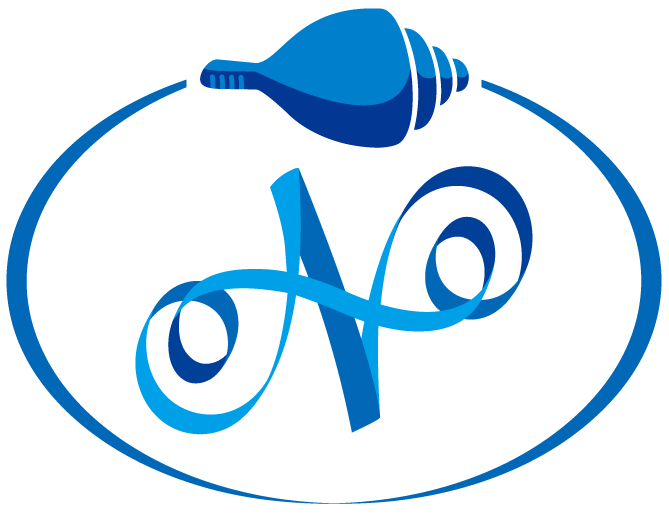The Special significance of Naadam in London this year- a member of the UK Mongolian community Enkhee Namsrai writes

This article was first published on the official website of the Mongolian Embassy in the UK, 29 June 2023. http://embassyofmongolia.co.uk/?p=4743&lang=en
London is always full of surprises, even for those who live there. Here is what a friend told me a few years ago.
“It was a lovely sunny afternoon. I was walking near Wimbledon Common, when I heard a woman’s voice, strong and clear, singing in a foreign language I couldn’t identify. I followed the sound through the park, to an open field surrounded by trees. Here there stood a wide circle of tents, bright blue and white, as well as a yurt. In the middle of this arena next to a spectacular flagpole, several pairs of men were wrestling, keenly watched by people of all ages, many wearing bright, colourful traditional robes. Across the path, more people stood in line waiting to take part in archery practice with unusual, powerful looking bows. Soon after, someone asked me into the yurt and I was offered Mongolian-style milky tea, some other sort of dairy product and a delicious fried meat pastry. I felt as if I’d been spirited away to a paradise full of hospitable people, enchanting music, games and laughter!”
This ‘paradise’ my friend had stumbled across was in fact the Mongolian Naadam festival held in London in 2016, which was later awarded the second prize for cultural authenticity and quality among all the overseas Mongolian communities judged by the Ministry of Foreign Affairs.
Naadam is the national festival celebrated every July in Mongolia and anywhere that there is a substantial Mongolian community throughout the world.
Interestingly, my friend’s experience reminded me most of the Highland Games that take place mainly in the north of Scotland every summer. There, amateur sportsmen compete to throw heavy weights and tree trunks further and more elegantly than each other; there are tug of war contests and running races (often up and down a hill) and dancers in traditional tartan costumes leap about over swords to the music of the bagpipes. The friendly, welcoming atmosphere is very similar.
The Mongolian word ‘naadam’ also means ‘Game’ or ‘Games’; ‘naadakh’ means to ‘play’, and ‘naadamchin’ means ‘player’ or ‘participant’.
There have been Naadams in Mongolia since ancient times. Some of the first ones would have been held the day after a solemn ritual in honour of the shamanic Sky God, conducted at a large cairn or ‘ovoo’ at the top of a particularly holy mountain. Later, Buddhism in Mongolia adopted the same practice. Local rulers would also hold Naadams in for honoured guests. Under socialism, Naadams were still held as celebrations for the people and the state. This continues today, and since the start of democracy in Mongolia, Naadams with Buddhist and Shamanic connections have been revived as well.
This year at Naadam, Mongolian leaders will recall the emergence of the ancient Khunnu state more than 2000 years ago; Chinggis Khaan’s founding of the Great Mongol Empire in 1206; the beginning of Mongolian socialism a hundred years ago, and the transition to democracy in the early 1990s.
Over the centuries what goes on at Naadam has gradually evolved. But the core national sports activities continue as always- wrestling, archery and racing, wherever circumstances allow.
Each of these sports had its roots in the unique everyday culture of steppe nomads. Horses are their most important mode of transport. Almost everybody could ride, and like today, many were expert breeders, riders and trainers of Mongolia’s small but strong racehorses. Today the races at Naadam throughout the country take place on open steppe. The riders are young boys and girls above 7 years old. The distances vary according to the age of the horses. I grew up listening to wonderful folktales about the finest racehorses.
Skill at archery was vital for hunting and defence. Women archers are equally strong competitors today. Wrestling, learnt from childhood, teaches resilience and self-awareness, as well as building up strength for the many arduous tasks of nomadic life. In particular, wrestling has a culture of decorum, fairness and mutual respect between competitors, judges and audience.
The Naadam concept itself is registered in UNESCO’s list of the Cultural Heritage of Humanity. Several instruments including the famous horse-head fiddle, types of singing and a particular game called ‘knucklebone shooting’ played at Naadam are also registered. The ‘knucklebones’ used are from the hind legs of sheep. They have been used for games in various cultures, including ancient Persia, Egypt, Rome and native American civilisations.
History tells us that when, as a young man, Chinggis Khaan and his then closest friend Jamukha became blood-brothers, they exchanged knucklebones as a symbol of loyalty and friendship. We also read that knucklebone shooting was played at a Naadam held by Khubilai Khaan, Chinggis’s grandson, in 1260.
This year marks the 24th London Naadam celebrated by the expanding and active UK Mongolian community with the support of the Mongolian Embassy. Once again it takes place on the first Sunday in July on Wimbledon Common. It is particularly special occasion, because this year is the 60th anniversary of the establishment of diplomatic relations between the UK and Mongolia. Although UK was the first western country to establish formal relations with Mongolia, there had already been numerous contacts between the two countries for a century or more.
Because my first experience of Naadam was at small celebrations in country villages where I probably knew half the people there, I find a particular charm in the close community aspect of our Naadam in Britain. But it must also be said that the magnificent opening ceremony of the National Naadam in Ulaanbaatar, where elegant cavalry troops carry replicas of Chinggis’s famous nine banners, is unique in the world.
Whenever and wherever Naadam is held, Mongolians celebrate in their own unique style, giving thanks to their ancestors and passing this precious cultural heritage and legacy on -not only to their own next generations, but by sharing their Naadam with every visitor passing by, who if they would like to join the party, will be sure of a warm welcome!
Saikhan Naadaarai!
